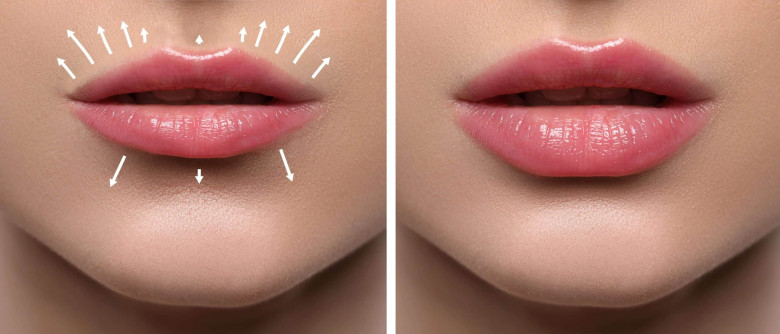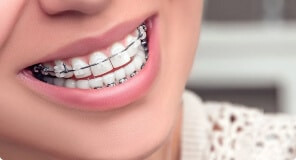views
Find Relief from Chronic Migraines with Botox Injection
For individuals who suffer from chronic migraines, the search for an effective treatment can often feel overwhelming and frustrating. For those who experience chronic migraines, finding effective treatment can feel like a never-ending journey. While traditional medications are often the go-to option, more and more people are turning to innovative solutions like Botox as a treatment for migraine relief. But how does Botox work for migraines, and is it worth considering? In this blog post, we will explore the role of Botox in migraine treatment and help you understand whether it could be the solution you've been seeking.
Understanding Migraines
Migraines are not just severe headaches; they are a neurological condition causing intense, throbbing pain, usually on one side of the head. Some individuals may also experience auras visual disturbances that occur before a migraine attack.
The cause of migraines is not fully understood but is believed to stem from abnormal brain activity affecting nerve pathways and blood vessels. Common triggers include:
- Stress
- Certain foods
- Hormonal changes
- Lack of sleep
For many sufferers, migraines are an ongoing issue, affecting their daily lives. While over-the-counter pain relievers and prescriptions are commonly used, Botox has become a promising treatment for chronic migraines. Botox injections have been shown to reduce the frequency and severity of attacks, offering hope to those who have not found relief through traditional methods.
Botox and Its Uses
Botox, a neurotoxic protein, is widely known for its cosmetic uses, such as reducing wrinkles. Approved by the FDA in 2010, Botox helps individuals who suffer from migraines 15 or more days per month, lasting four hours or longer. By temporarily paralyzing certain muscles, Botox can reduce the frequency and intensity of migraine attacks, providing significant relief for many migraine sufferers.
- FDA-approved for chronic migraines
- Reduces migraine frequency and intensity
Is Botox Right for You?
Botox is typically regarded as a safe and effective treatment for individuals suffering from chronic migraines. However, it is not suitable for everyone. Botox is typically recommended for individuals who have tried other treatments without success and are seeking an alternative.
If you have migraines 15 or more days per month and have not found relief with other medications or therapies, Botox may be a good option for you. It’s important to consult with a healthcare professional, such as an experienced specialist at Wimbledon Dental and Implant Centre who can evaluate your condition and determine if Botox is appropriate.
How Botox Treats Migraines
Botox works by blocking certain chemicals involved in pain transmission and preventing muscle contractions that may contribute to migraines. While the exact mechanism isn’t fully understood, it’s believed that Botox affects sensory nerves responsible for transmitting pain signals, thereby reducing the likelihood of a migraine.
- Blocks pain transmission chemicals
- Prevents muscle contractions
- Injected into forehead, temples, neck, and shoulders
- Administered every 12 weeks
Botox doesn’t cure migraines but helps reduce the frequency and severity of attacks, making it easier for patients to manage their condition. Many individuals notice a reduction in migraine days after just one session, although full results may take several sessions.
Benefits of Botox for Migraines
Botox offers several advantages for individuals with chronic migraines, especially those who have not found relief through traditional medications. Here are some of the key benefits:
1. Reduced Frequency and Intensity of Migraines
One of the main benefits of Botox for migraines is its effectiveness in significantly reducing the frequency and severity of migraine attacks. Patients who undergo Botox treatment often report fewer days with debilitating headaches, as well as milder symptoms when migraines do occur.
2. Long-Term Relief
Botox offers relief that lasts longer than traditional migraine medications. While oral medications need to be taken regularly and can cause side effects, Botox injections are typically given every three months, offering a more convenient treatment option.
3. Reduced Dependence on Medication
Many migraine sufferers rely on medications to manage their symptoms, but overuse of painkillers can lead to rebound headaches or other health issues. Botox treatment can reduce the need for painkillers and help patients rely less on pharmaceutical solutions.
4. Minimal Side Effects
Common side effects include mild pain or swelling at the injection site, but these are typically short-lived. Serious side effects are rare, making Botox a safe and effective option for most patients.
Potential Side Effects and Risks
Like any medical treatment, Botox does carry some potential risks. While it is generally considered safe, there are a few side effects that patients should be aware of:
- Allergic Reactions
In some cases, patients may experience allergic reactions to Botox, which could include itching, rash, or swelling in areas distant from the injection site. While rare, if any signs of an allergic reaction occur, it is important to seek medical attention promptly.
2. Flu-Like Symptoms
Some patients report experiencing flu-like symptoms, such as fatigue, muscle weakness, or a headache, after receiving Botox injections.
3. Neck Pain and Muscle Weakness
Since Botox is injected into the neck and shoulder muscles, some patients may experience mild neck pain or muscle weakness after treatment. This is typically short-lived and doesn't impact daily activities.

Botox Treatment for Migraines in Wimbledon
If you are considering Botox treatment for migraines, Botox Wimbledon clinics can offer consultations to assess your symptoms and treatment options. Professional practitioners will guide you through the process and ensure that the treatment is tailored to meet your specific needs. Whether you’re looking for a solution to reduce the frequency of migraines or improve your quality of life, Botox could be a viable treatment option to explore.
Conclusion
Botox has become an effective treatment for chronic migraines, offering long-term relief by reducing the frequency and intensity of migraine attacks. Although it isn't a cure, Botox offers a non-invasive option for those who haven't experienced success with conventional treatments. If you're thinking about using Botox for migraines, it's important to consult a qualified healthcare provider or Botox specialist to determine if it's the right choice for you.
At The Dental Lounges - Wimbledon, we’re committed to providing innovative treatments to enhance your health and wellbeing, helping you live a pain-free life.




Comments
0 comment